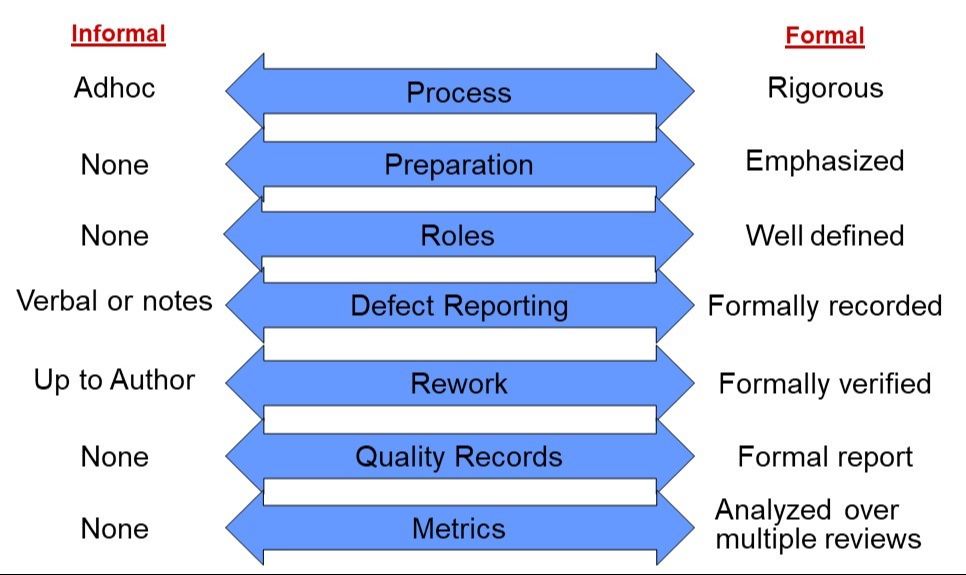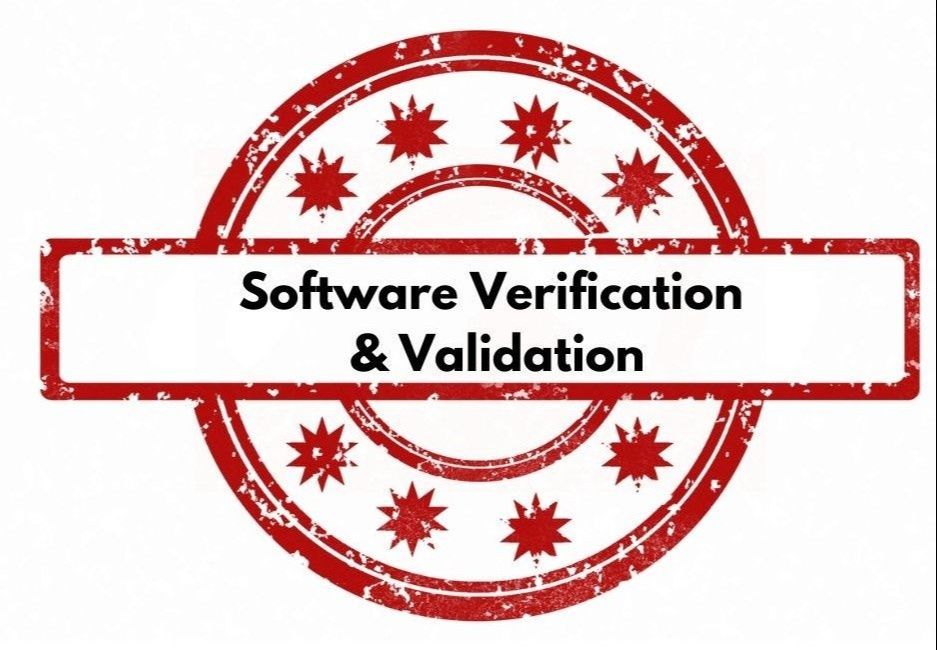Informal vs. Formal Peer Reviews
by Linda Westfall

Peer reviews can vary greatly in their level of formality. At the most informal end of the peer review spectrum, a software practitioner can ask a colleague to, “Please take a look at this for me.” These types of informal peer reviews are performed all of the time. It is just good practice to get a second pair of eyes on a work product when the practitioner is having problems or needs a second opinion. As illustrated in the figure above, these informal reviews are done ad hoc with no formal process, no preparation, and no quality records or metrics. Defects are usually reported either verbally or as redlined mark-ups on a draft copy of the work product. Any rework that results from these informal peer reviews is up to the author’s discretion.
On the opposite side of the spectrum is the formal peer review. In formal peer reviews, a rigorous process is documented, followed, and continuously improved with feedback from peer reviews as they are being conducted. Preparation before the peer review meeting is emphasized. Peer review participants have well-defined roles and responsibilities to fulfill during the review. Defects are formally recorded and that list of defects and a formal peer review report become quality records for the review. The author is responsible for the rework required to correct the reporting defects and that rework is formally verified by either re-reviewing the work product or through checking done by another member of the peer review team (for example, the inspection moderator). Metrics are collected and used as part of the peer review process. Metrics are also used to analyze multiple reviews over time as a mechanism for process improvement and defect prevention.

The Westfall Team Posts Verification & Validation (V&V) Resources.
These resources are free to anyone who wants to read or download them. Subscribe to the Software Excellence Academy to be notified when new resources are added.

